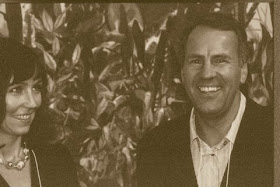
The policy at Burrowing Owl is to allocate its wines among three sales channels – restaurants and wine stores; internet sales and finally at the winery’s shop in the Okanagan. By the time the review sample of this magnificent wine reached me, the winery had closed down its internet sales. But stop by the winery on your next Okanagan trip. This is a 91 point wine.
Burrowing Owl has made a Meritage – another name for a blend of Bordeaux varieties – since 2000. In recent years, all five varieties go into the blend. This blend is Merlot (53.8%), Cabernet Franc (27.5%), Cabernet Sauvignon (12.5%), Petit Verdot (2.5%) and Malbec (3.7%).The winery further tweaks the complexity with its barrel program. The wine spent 22 months in a selection of barrels: 41% French, 26% American, 28% Russian and 5% Hungarian. Two-thirds of the barrels were new. Surprisingly, this wine is not over-oaked. The wine is so rich that it just seems to have soaked up the wood, reflecting in vanilla notes in the aroma and palate.
This wine is full-bodied, with an inviting aroma of plums, red berries and chocolate. That leads to flavours of chocolate, plums and currants. The long, ripe tannins contribute to the earthy, mouth-filling textures of this wine. The finish lingers forever, with a delicious hint of liquorice and mint. The winery suggests this wine, while drinking well now, will age to at least 2016.

Burrowing Owl has made a Meritage – another name for a blend of Bordeaux varieties – since 2000. In recent years, all five varieties go into the blend. This blend is Merlot (53.8%), Cabernet Franc (27.5%), Cabernet Sauvignon (12.5%), Petit Verdot (2.5%) and Malbec (3.7%).The winery further tweaks the complexity with its barrel program. The wine spent 22 months in a selection of barrels: 41% French, 26% American, 28% Russian and 5% Hungarian. Two-thirds of the barrels were new. Surprisingly, this wine is not over-oaked. The wine is so rich that it just seems to have soaked up the wood, reflecting in vanilla notes in the aroma and palate.
This wine is full-bodied, with an inviting aroma of plums, red berries and chocolate. That leads to flavours of chocolate, plums and currants. The long, ripe tannins contribute to the earthy, mouth-filling textures of this wine. The finish lingers forever, with a delicious hint of liquorice and mint. The winery suggests this wine, while drinking well now, will age to at least 2016.

Burrowing Owl Cabernet Sauvignon 2006 ($38)
This is a firm red with a disciplined structure that one expects in serious Cabernet Sauvignon built for aging. The wine is approachable now but needs to be decanted so that the aromas and flavours open up. My test with a young red is to leave half a bottle to be finished the next day. I was rewarded with a wine that begins with aromas of cedar, vanilla and red currants and opens to rich flavours of dark fruit and chocolate. Because this wine, along with the Meritage, is meant to age, the closure is natural cork. This wine will also still be drinking well in 2016. 89 points.
Burrowing Owl Chardonnay 2007 ($25)
This full-bodied Chardonnay begins with complex aromas of tangerine and subtle toasty oak. The palate follows through with citrus flavours enriched with the buttery notes that come from barrel fermentation, followed by malolactic fermentation. There is a layered complexity to the flavour profile. The acidity is soft, perhaps a little too soft. With 13.5% alcohol, this is not a shy wine. It has a warming finish with a hint of bitterness. This is a Chardonnay for those who appreciate a wine that has had the full treatment in the cellar. 88
Burrowing Owl Pinot Noir 2007 (N.A)
This is a seductive wine, no question about that, beginning with the lovely jewel-like ruby hue. The aromas show a medley of cherry and  strawberry notes backed with a light toastiness from the oak. On the palate, this is a medium-bodied but juicy wine, with flavours of black cherries. This is a very cheerful wine with a vivacious, sexy personality. 90
strawberry notes backed with a light toastiness from the oak. On the palate, this is a medium-bodied but juicy wine, with flavours of black cherries. This is a very cheerful wine with a vivacious, sexy personality. 90
 strawberry notes backed with a light toastiness from the oak. On the palate, this is a medium-bodied but juicy wine, with flavours of black cherries. This is a very cheerful wine with a vivacious, sexy personality. 90
strawberry notes backed with a light toastiness from the oak. On the palate, this is a medium-bodied but juicy wine, with flavours of black cherries. This is a very cheerful wine with a vivacious, sexy personality. 90This wine is also something of a paradox. The Burrowing Owl Vineyard on Black Sage Road, according to conventional wisdom, is less than ideal for Pinot Noir. It is a hot site and a sandy one. Normally, Pinot Noir is grown on cooler sites with clay soils. Yet Burrowing Owl has made successful Pinot Noir here since 1999. Invariably, the wines are - like the current release - full-bodied and bursting with fruit flavours. Obviously, the farming here is first class if Burrowing Owl can pull off good Pinot Noir year after year.



